rover
Latest

Curiosity awakens from nap to resume full operations
Curiosity is back to work on Mars after it shut itself down due to a software glitch on July 2nd. Even though tech support for the rover is nearly 60 million miles away, NASA scientists weren't too worried about the issue. As suspected, the cause was found to be a "software mismatch in one mode of how image data are transferred on board." However, other means are available to transmit image data, so the team powered up the rover on July 9th and will simply avoid using the problematic mode.
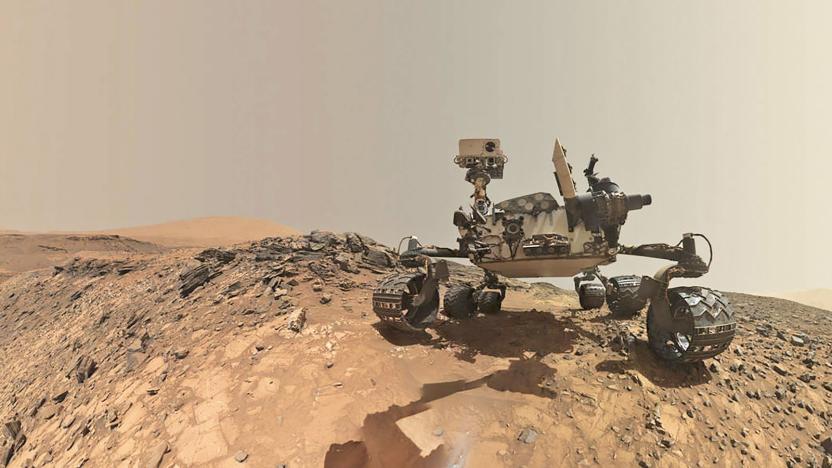
NASA's Curiosity rover took a 'safe mode' nap this weekend
On July 2nd, humanity's rugged little Mars explorer, Curiosity, automatically shut itself down and restricted most of its functions over the holiday weekend. Fortunately, scientists successfully secured communications with the rover, so all is not lost, and soon their diagnostics will reveal what went wrong.
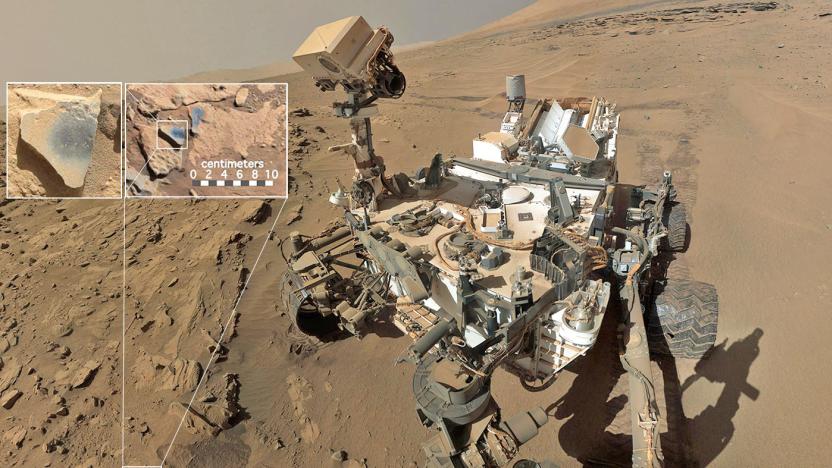
Curiosity finds evidence that Mars was once rich in oxygen
Mars may have had a much more Earth-like atmosphere rich in oxygen, according to JPL's Curiosity team. Using its laser-firing instrument in the Gale Crater, the intrepid rover found rocks with manganese oxide, which requires oxygen to form. On Earth, such minerals marked a period when our atmosphere became much more oxygen-rich, largely because of microbes. "Now we're seeing manganese oxides on Mars, and we're wondering how the heck these could have formed," says Los Alamos scientist Nina Lanza.
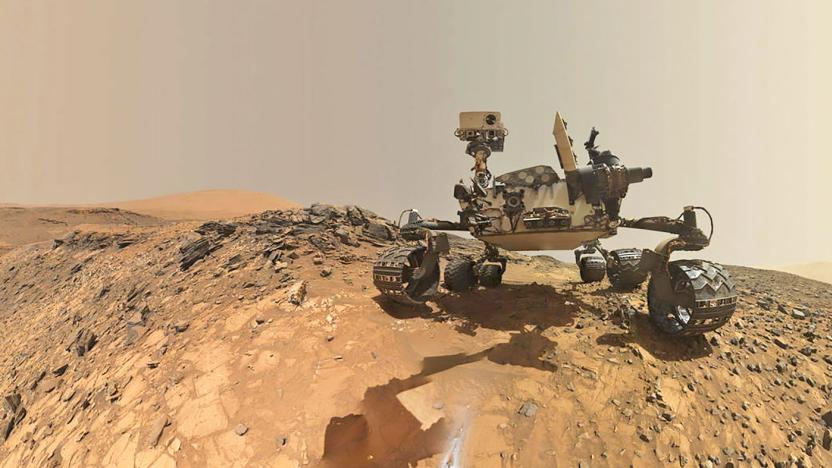
Mars may have had explosive volcanoes
The prevailing wisdom is that Mars has long been a stable planet. Without tectonic plates, it didn't have the violent upheavals that lead to earthquakes and explosive volcanoes here on Earth... did it? Not so fast. Scientists combing over data from NASA's Curiosity rover have found evidence suggesting that explosive volcanoes were a reality in the past. Samples from the planet's Gale crater include high concentrations of the mineral tridymite, which you tend to see around explosive volcanoes here on Earth. If so, the material was most likely carried from volcanoes to the crater by ancient water streams.

NASA is building the next Mars rover in mixed reality
I poked my head inside NASA's latest Mars rover. During a mixed-reality demonstration at the Jet Propulsion Laboratory (JPL) in Pasadena, as soon as I strapped on a HoloLens, a vibrant holographic vehicle popped up in front of me.

Curiosity snaps a pic of the most rugged plateau it crossed
The Curiosity rover is almost done crossing the most rugged terrain it has ever crossed -- and of course it whipped out its trusty Mast Camera (Mastcam) to take a panorama for us Earthlings. Curiosity began its journey through the "Naukluft Plateau" in March, battling a sandstone bedrock full of sharp ridges. Naukluft, which is located in lower Mt. Sharp, got its distinct look from billions of years of wind erosion. The rover's ground team says the terrain didn't damage the vehicle's wheels more than it should, so it's still in good enough condition to reach its final destination.
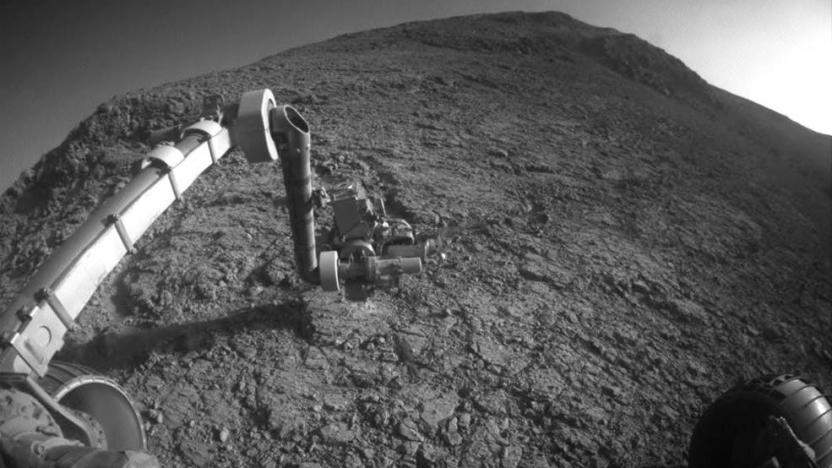
NASA's Opportunity rover celebrates 12th anniversary on Mars
When the Opportunity made its Mars landing on January 24th, 2004, NASA believed the rover would only last about 90 days, due to the Red Planet's dusty nature. But, thanks to unexpected winds which kept Opportunity's solar panels clean, that obviously never happened. This week, the aging rover celebrated 12 years on Mars, at least in terms of Earth time -- one Martian year is equivalent to roughly 1.9 of ours.

China plans to visit the dark side of the moon in 2018
The dark side of the moon hasn't been extensively explored by humans yet (hence the name), and China aims to do so in 2018. The country's State Administration of Science, Technology and Industry for National Defense (SASTIND) announced plans Thursday that include landing the first probe in the area. That spacecraft, the Chang'e-4, is similar to the Chang'e-3 that delivered the Jade Rabbit rover to the moon in 2013, but carries a larger payload. In early 2014, the rover was no longer able to move despite its instruments still functioning.

NASA sidelines its next Mars Rover mission indefinitely
NASA announced on Tuesday that it has cancelled the upcoming March, 2016 launch of its next Mars Rover, the InSight mission, after realizing it would be unable to fix a busted, French-built seismological instrument in time for liftoff. Unfortunately, due to the relative orbits of Earth and Mars, we won't have another suitable launch window for at least 26 months after that -- aka, May 2018.

New data suggests Mars had lakes that could have supported life
If you asked most star-gazers about water on Mars a month ago, you'd likely be told there is evidence for liquid H2O in the past, but it's probably long gone. How things can change. First was the big announcement that liquid water is still present (in some form). Now, new data from the Curiosity rover suggests there could have been a lot more of it than first thought, for longer periods of time, with the conditions needed to support life.

NASA's bouncing 'Hedgehog' robot is designed to explore comets
The last time humanity tried to explore a comet, things didn't go so well -- the ESA comet lander Philae bounced during touchdown and wound up under a cliff, unable to right itself. Eventually its batteries ran down we lost contact. A sad way to end the mission, but we can't say that we didn't learn anything: NASA engineers are now working on a low-gravity unmanned exploration vehicle designed to bounce, tumble and roll around asteroids and comets. It's called the Hedgehog.

ISS astronaut will get to drive and 'feel' a rover on Earth
It's going to be a little while before humanity sets foot on Mars, but in the meantime NASA has a bundle of robots exploring the planet for us. The data they're collecting is valuable, but now researchers want to give their operators greater control. Specifically, they're interested in force feedback -- timely vibrations that would help astronauts carry out difficult tasks remotely. The European Space Agency (ESA) has developed a new rover with this in mind -- the "Interact Centaur," which has an onboard camera and two force-sensitive arms. ESA astronaut Andreas Mogensen is headed to the International Space Station (ISS) on September 2nd and, five days later, he'll be controlling one that's back on Earth.

Now you can drive around Mars with NASA's Curiosity simulator
Want to explore the surface of the red planet without signing up for the Mars One mission? No problem: NASA has built two interactive web applications that will let you explore the planet to your heart's content from the comfort of your armchair.
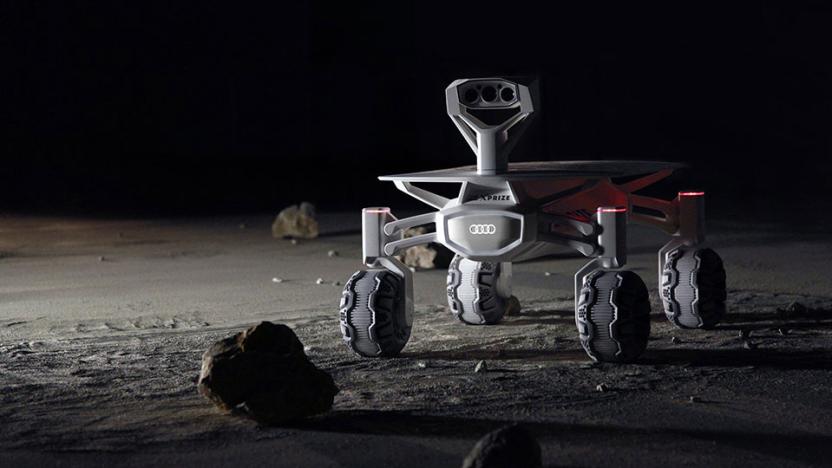
Audi is helping to make a moon rover for Google's Lunar Xprize
In a possible bid to make the most stylish entry yet for Google's Lunar XPRIZE, Audi has announced that it's teaming up with Part-Time Scientists, a German team working to put its rover on the moon. The carmaker says it's providing the Quattro's four-wheel drive tech, as well as expertise in lightweight construction and piloted driving. It's also getting a handy chunk of advertising, as the rover will now be called the Audi lunar Quattro moon rover -- in case you forget who helped.

MIT gave exploring robots a way to plan underwater missions
Forget those teensy deep-sea submersibles cradling crews of brave scientists -- the future of underwater exploration might be led by robots that can do their own thing. MIT engineers, led by professor Brian Williams, cooked up a system that lets autonomous underwater drones figure out and act on the nitty-gritty details of their missions without the need for meticulously laid-out plans.

Curiosity finds evidence of life-giving nitrates in Mars rocks
NASA's Curiosity rover isn't done finding signs that Mars once had the prime ingredients for life... not by a longshot. The explorer robot has discovered evidence of nitrates, the nitrogen compounds that are some of the key nutrients for life, in rocks at three places near its landing site. This still doesn't mean that Mars did harbor life in its heyday, but it's now that much more likely. The big question is whether the processes that formed those nitrates are still active, or if they died out when the planet became barren -- scientists aren't sure, and it could take a while to get an answer.

Curiosity rover's arm is suffering short circuits, but it's OK
The Curiosity rover's drilling career is in danger. Its robotic arm has been having sporadic short circuits ever since late February. Its issues started on February 27th, when a surge of current shut down the the rover while it was processing some samples. After running a couple of tests, NASA pinpointed the culprit, which is apparently the coil that generates magnetic fields. This coil operates the striker, which, in turn, moves the drill. While unfortunate, the drill will still work even if the coil and the striker completely give out, though it'll only be able to dig through softer surfaces. Don't worry, though: NASA, according to The New York Times, believes this won't affect the mission as a whole. The agency also plans to start drilling with the arm again next week -- fingers crossed its problems are over by then. [Image credit: NASA/JPL-Caltech/MSSS]

Curiosity learns to drill into Mars rocks without breaking them
It's no secret that scientists want the Curiosity rover to drill into Mars more often. However, it first has to learn how to drill properly -- until now, it was so aggressive that it sometimes broke the rocks it was trying to sample. Thankfully, NASA has a fix. It recently started testing a new drilling algorithm that starts at the lowest power levels and ramps up only if there isn't much progress. This gentler touch appears to be successful in early tests: as you can see above, Curiosity bored into a relatively fragile rock without smashing it to bits. It's too soon to say whether or not the technique will work well in every circumstance, but researchers can at least be confident that they won't destroy crucial evidence before they've had a chance to look at it. Update: NASA has released a Curiosity selfie (below) at its latest drill site showing a lot recent landmarks. [Image credit: NASA/JPL-Caltech/MSSS]

Lunar Xprize competitors get $5.25 million for reaching key milestones
The Lunar Xprize challenge isn't just meant to reward the first team that lands a private rover on the Moon -- it's there to give some encouragement along the way, too. Accordingly, Google and Xprize have just handed out a total of $5.25 million to five competitors for hitting milestones in imaging, mobility and landing technology. Astrobotic Technology is the big winner, having scooped up $1.75 million across all three areas. Not that the others are exactly hurting. Hakuto, Moon Express, Part-Time Scientists and Team Indus all snagged between $500,000 to $1.25 million each.

NASA wants helicopter drones to lead the way for Mars rovers
Rovers have a tough time getting across Mars' vast, unforgiving landscape. They can't see very far ahead, and the crew back home can only offer so much help by looking at orbital imagery. NASA's Jet Propulsion Laboratory may have a clever solution to that problem, though: an aerial robot scout. Its proposed Mars Helicopter drone would fly ahead of rovers and give operators a much better view of the Martian terrain, helping them plot the quickest route to interesting locales. It could even find a safe spot to deposit samples that future rovers would pick up.












